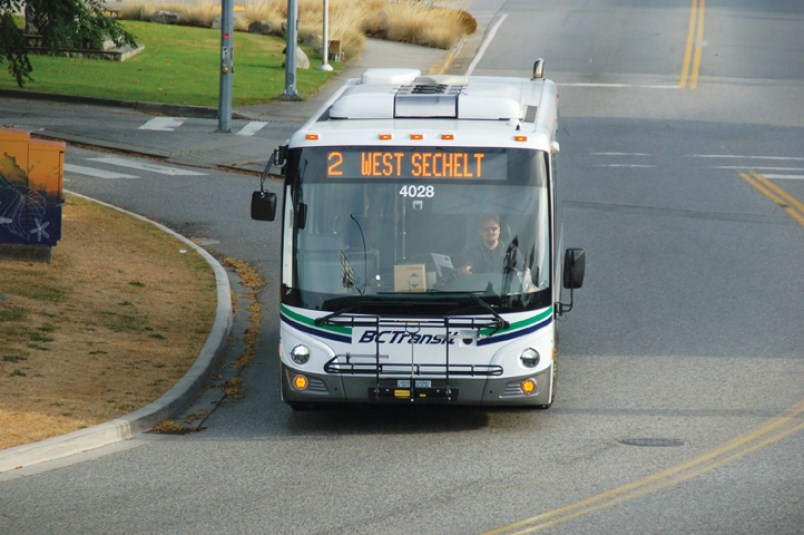Changes to the Sunshine Coast Regional District’s (SCRD) transit funding model will be explored at a special committee meeting in the spring.
At a Jan. 25 meeting, Tina Perreault, the SCRD’s chief financial officer, presented a report comparing funding transit models. Currently, transit is paid for by a combination of bus fares, property taxes and BC Transit contributions. The SCRD pays for 53 per cent of conventional transit and 33 per cent for HandyDART, with BC Transit paying the remainder.
In B.C., transit is typically funded by a three-way partnership between an operating partner, BC Transit and a local governing body. On the Sunshine Coast, the SCRD acts as both the local body and operating partner, and is one of only four local governments in the province with this type of arrangement. The others are Powell River, Nelson and Nanaimo.
Staff looked at three funding model alternatives from Nanaimo Regional District, Cowichan Valley Regional District and the Regional District of North Okanagan, and found that transit can be paid for by service hours, route length, number of stops by area, passenger activity, population or assessment.
Any changes to how much electoral areas pay for transit will not be made in 2018.
The report is part of the ongoing transit expansion project currently underway on the Sunshine Coast, which includes the addition of six new buses and reducing wait times between services. In 2017, buses began providing 30-minute service on Route 90 and hourly service on Route 1. The transit expansion project will cost taxpayers $310,000 in 2018, according to the preliminary budget.
Ian Winn, director for Howe Sound, also made a request for staff to report to a committee on what would be required to begin a broader review of selected services provided by the SCRD. The motion was carried.



